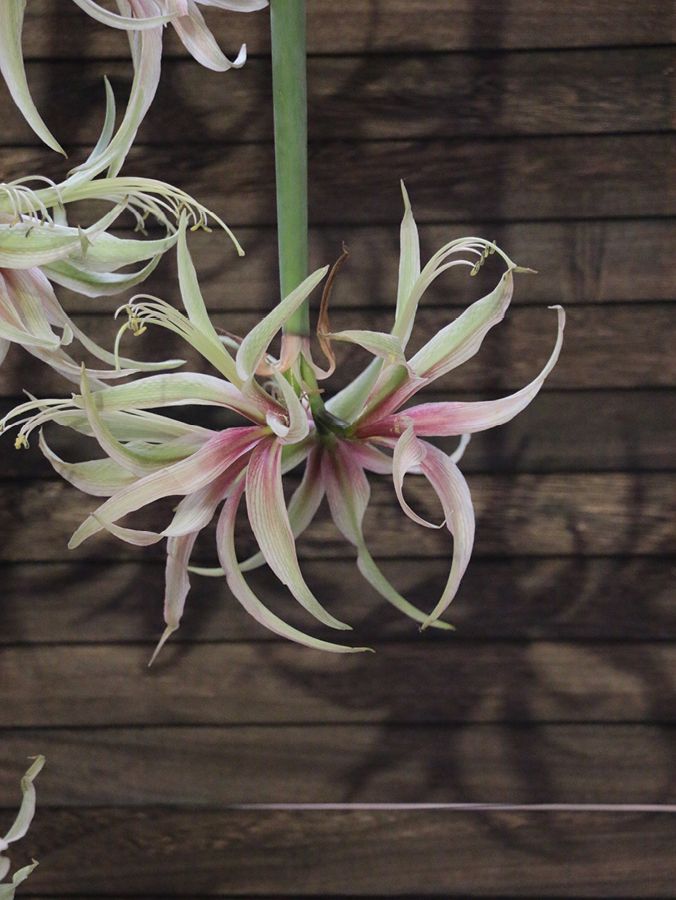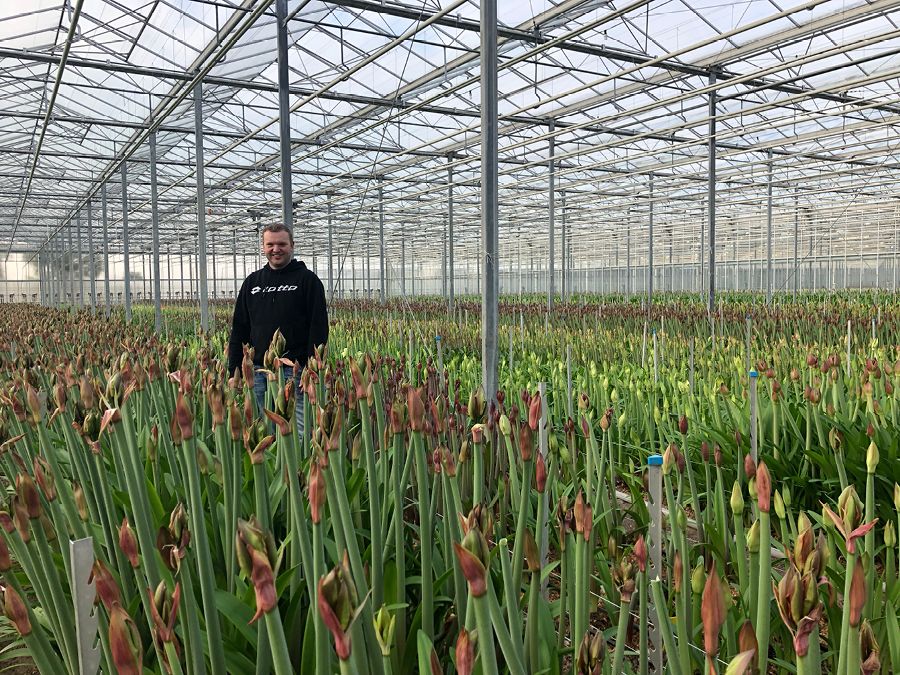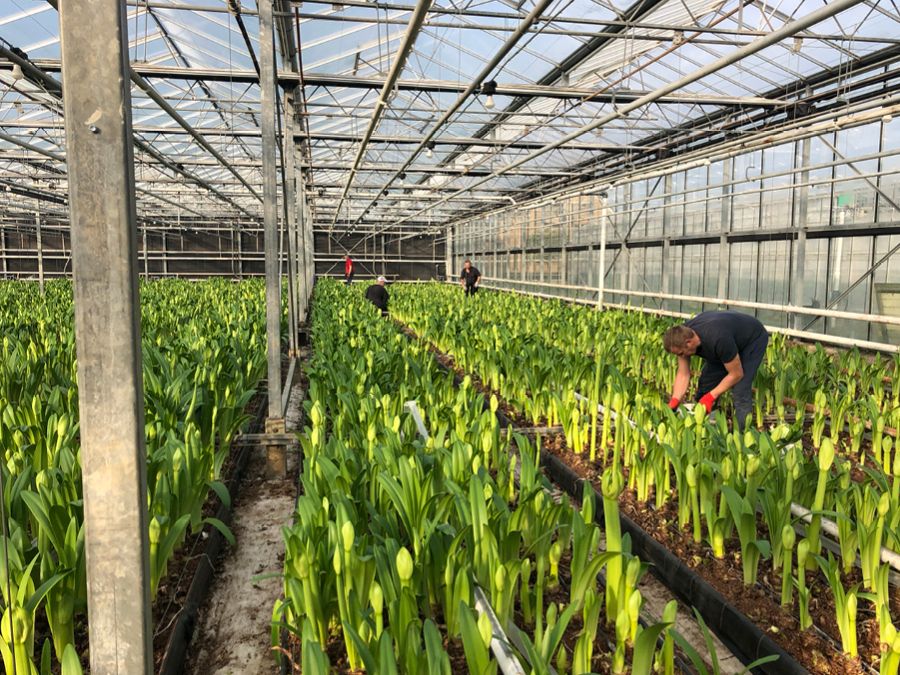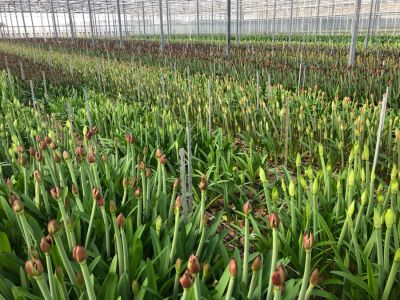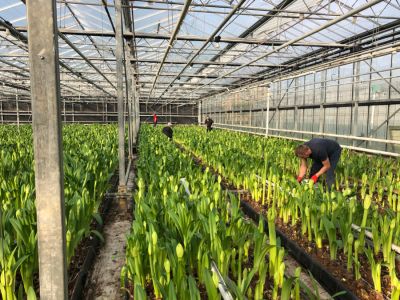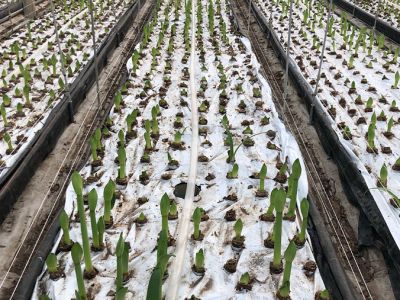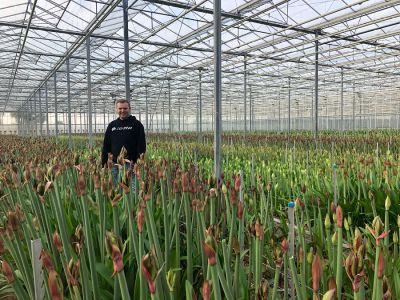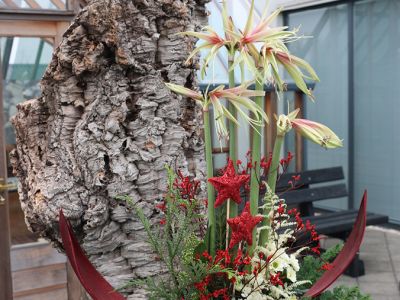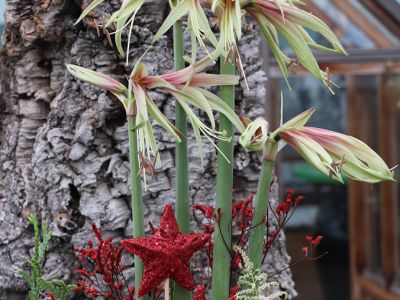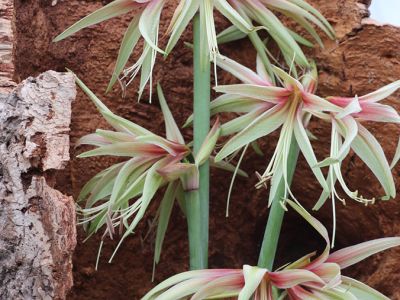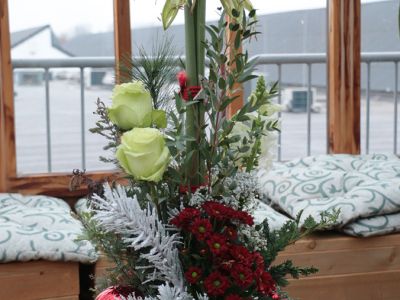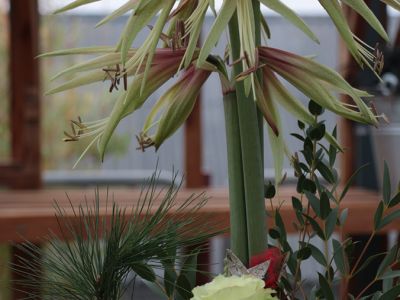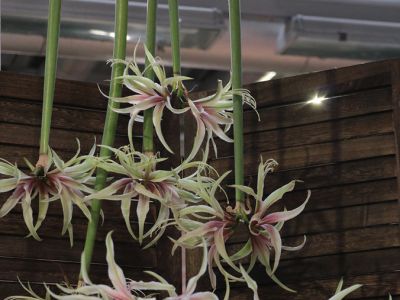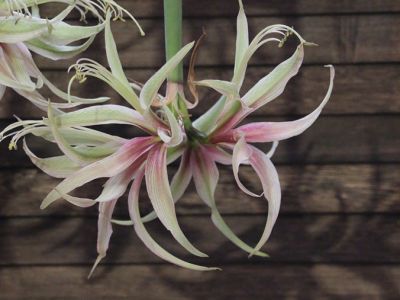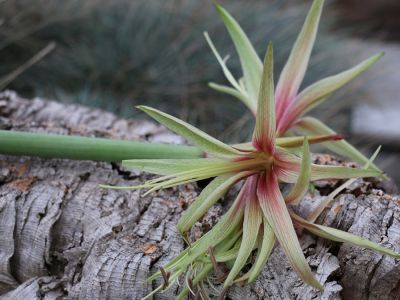Hippeastrum Tarantula
In the spotlights
For this week's product, we went to visit the Van der Ende nursery to learn more about the Cybister. 'Cybister' appears to be the trade name, an indication for the arachnid Hippeastrum (Amaryllis). In the spotlight of this week is the Hippeastrum 'Tarantula'.
You’ve heard it before:
Hippeastrum, derived from Hippeus (knight) and Astron (star), is originally from South America. This is the flower we know as the "Amaryllis". It has a hollow stem and only grows indoors. The real Amaryllis, derived from the Greek amarussein which means sparkling or radiant, originates in South Africa. This flower has a filled stem and grows outside.
In the spotlights
Nursery ‘van der Ende’, established in Maasdijk, has been growing Amaryllis cut flowers for more than 25 years. From September to June they offer an extensive range of Amaryllis. Van der Ende is the second largest Amaryllis nursery in the Netherlands, with the widest assortment. They try to distinguish themselves with the 'Cybister' species. In this weeks spotlight we find the Hippeastrum (Cybister) 'Tarantula'. This particular flower has thin, graceful petals that curl. It is a variety that is made by nature and is not produced by breeding. They have however been able to add different varieties to the original by breeding. The Tarantula is not a new variety and it has been on the market for at least 10 years. It remains an extremely popular product, but is unfortunately difficult to grow. The bulb does not give a lot of flowers and is therefore not very productive. Nevertheless, Van der Ende continues to grow the product, because of its popularity and because the Tarantula really adds value to their assortment.
Mission
Van der Ende tries to help the florist. They do this, for example, by offering sales support to florists. Because of this they know a lot of different florists. Additionally Van der Ende is affiliated with Floral Fundamentals; a platform that provides practical information about flowers, plants and various products that are used in the flower industry. It’s a communication platform where florists can communicate with growers and traders. Van der Ende tries to collect information after which they can apply this feedback in the company. The brothers also regularly visit various florists to keep track and receive direct feedback. This is an important core value of the company.
Processing tips
the Amaryllis is a very nice product that can be processed in several ways. Hang the flowers upside down for a completely different effect! To do this, insert a skewer through the stem (about two centimeters from the bottom) and tie a string to it. Fill the stem with water and hang it in a nice place in the house. Do not forget to refill the stem regularly with water!
Fill a vase with water. Then make 6 vertical slits at the bottom of the stem and put the flower in the vase. By doing this the stem will curl even more, giving the stem an additional ornamental value in the vase.

The cultivation
Growing 25 different types of Amaryllis requires 25 different cultivation methods. Martijn and his two brothers Sjoerd and Gerard provide the best growing conditions at their three different locations. In total, they grow their products on 11 hectares. Because all varieties demand their own cultivation method, a special water system is used. This allows them to regulate the water supply per bed.
Precious product
40 to 50 stems per meter can be harvested per year. This is not a lot compared to other crops where on average 300 to 400 stems per meter are harvested each year. The Amaryllis is not cut during several months but production peaks around the Christmas period when large numbers are being cut at one time. With these low number however, it is not surprising that the Amaryllis is a precious flower.
Sustainability as a business
No less than 500 solar panels, a heat pump, a combined heat and power installation and a certificate. The brothers do everything to be as sustainable as possible. What is special is that CO2 is purchased for distribution in the greenhouse. The flowers convert the CO2 into oxygen. There is a structural shortage of CO2 in the greenhouses. This is a very important nutrient for the plant, because it enables the flowers to grow thicker and stronger. To fill this shortage, CO2 is therefore purchased and distributed through the greenhouse through hoses.
Biggest challenge
Around the Christmas period it is very busy in the nursery and there are 100 staff working to get everything done. It is therefore the greatest challenge for the three brothers to organize everything for Christmas. They manipulate the temperatures to create the largest production at Christmas. In addition, it is important that the stems get enough height and weight. It is a puzzle every year to organize this in as best they can.
Sort and fill.
During our visit we were able to visit two of the three gardens. One slightly more modern than the other, but both very large and clean. At one of the two gardens they have a new machine that they use for sorting and packing the flowers. They have designed this machine themselves (together with the supplier) to process Amaryllises, and thanks to this machine, the work has become a lot lighter.
FloraPodium, 05 December 2018








